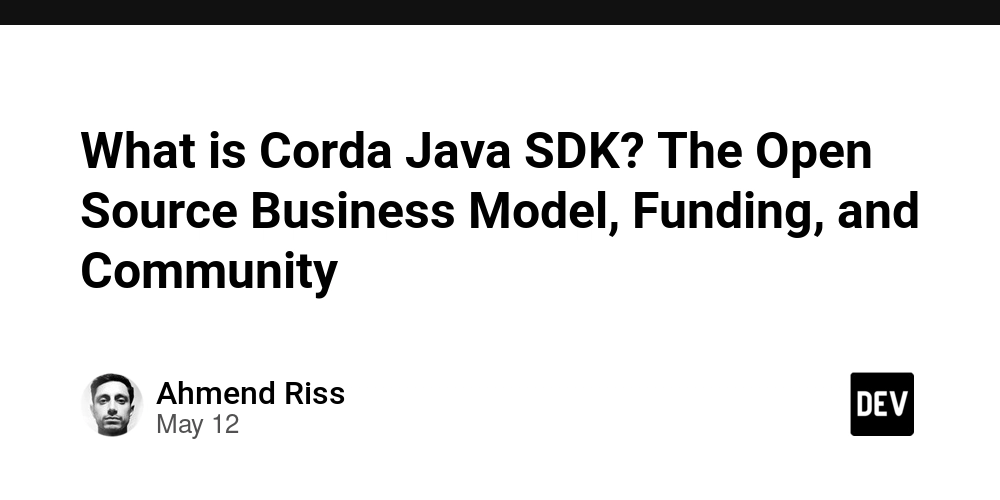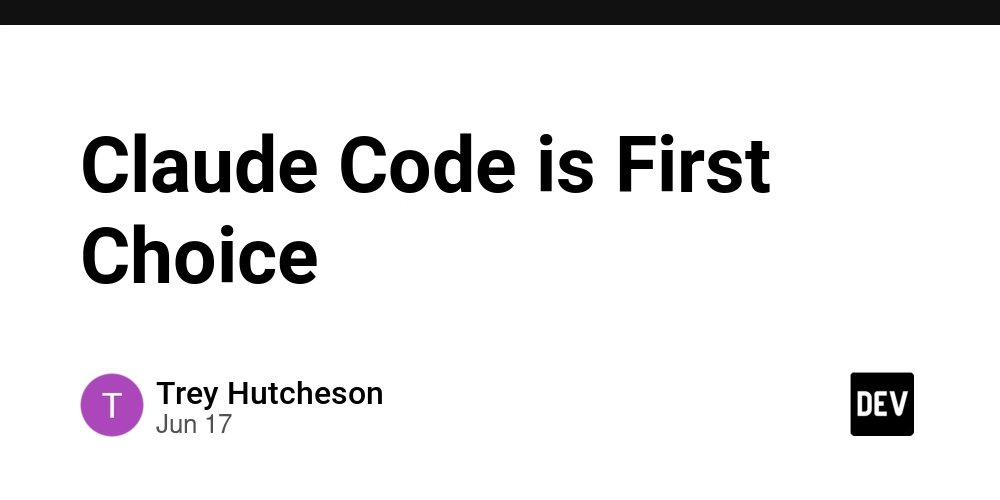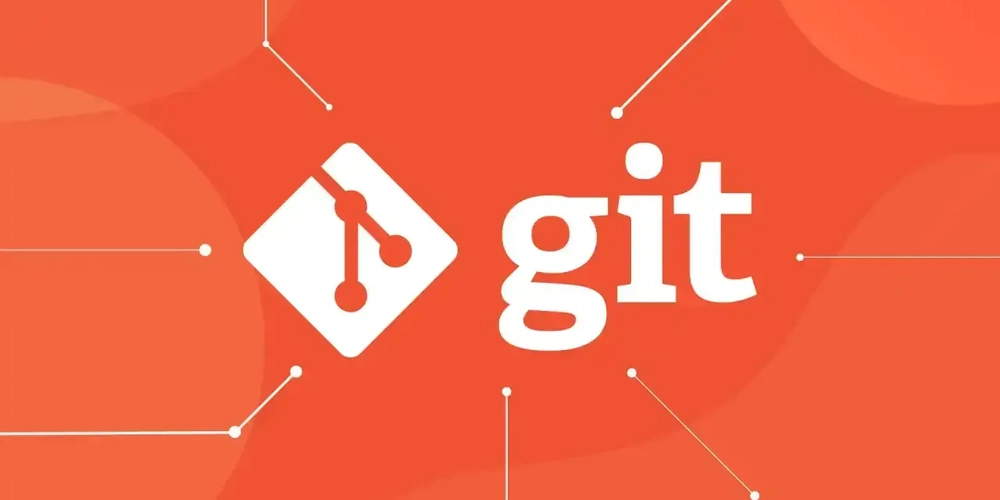What is Corda Java SDK? The Open Source Business Model, Funding, and Community
Abstract This post dives deep into the world of the Corda Java SDK, an enterprise-grade blockchain library from R3 built on an Apache 2.0 open source licensing model. We explore its history, ecosystem, core technical features, real-world applications, and the innovative funding methods that ensure its longevity. We also analyze key challenges and predict future trends in enterprise blockchain development. Along the way, we include tables and bullet lists to improve readability and highlight key points. Introduction Blockchain technology is transforming how businesses handle secure digital transactions and manage regulatory compliance. The Corda Java SDK is one such solution that has gained recognition for its secure, scalable, and community-driven approach. Developed by R3 and maintained as an open source project under the Apache 2.0 license, the Corda Java SDK has been widely adopted by financial institutions, supply chain managers, and legal services providers. In this post, we explain the significance of the Corda Java SDK in the modern blockchain ecosystem and discuss how innovative open source funding methods and active community participation contribute to its success. We draw from the Original Article while extending its discussion with additional insights and technical depth. Background and Context History and Evolution Corda was originally developed to meet the needs of regulated financial institutions requiring data privacy, interoperability, and secure transaction processing. The Corda Java SDK emerged from this initiative, providing developers with a robust toolkit to build blockchain-based applications. Its design emphasizes enterprise adoption, security, and compliance—traits that are essential in today’s digital finance era. Ecosystem and Definitions At its core, the Corda Java SDK is: Open Source: It is developed transparently, where improvements and contributions come from an engaged community. Enterprise Grade: Built to support mission-critical applications, its design covers everything from secure transactions to complex financial agreements. Apache 2.0 Licensed: This license permits modifications, redistribution, and integration with proprietary software, easing the adoption process for businesses. The SDK interacts seamlessly with the Corda blockchain network and targets industries requiring stringent compliance and data privacy. Its compatibility with existing enterprise systems ensures that organizations do not need to completely overhaul their legacy infrastructure. Open Source Funding and Community Innovative funding mechanisms have bolstered the development of the Corda Java SDK. Unlike traditional software models that rely on venture capital or subscription fees, the SDK’s support comes from: Direct Sponsorships and Donations Corporate Partnerships Crowdfunding Initiatives and Token-Based Incentives This multifaceted funding approach not only ensures continuous development but fosters a vibrant community where developers, corporate sponsors, and even enthusiasts collaborate to improve the technology. Core Concepts and Features The Corda Java SDK stands apart due to its unique blend of key technical attributes and a sustainable funding model. Below, we break down its core features: Key Technical Features Feature Description Interoperability Integration with various enterprise and blockchain solutions ensures seamless communication. Security & Privacy Utilizes advanced security protocols to protect data, making it ideal for regulated industries. Scalability Capable of handling millions of transactions, ensuring that performance does not deteriorate with load. Modular Design The SDK’s architecture is built for flexibility, enabling easy updates and further customization. Advantages of the Apache 2.0 License Permission and Flexibility: Developers can modify and redistribute the SDK, even in proprietary software projects. Community Trust: The permissive nature attracts corporate adoption and individual contributions. Long-Term Sustainability: Transparent licensing builds investor confidence and encourages continuous support from the community. For more insights into the power of open source licenses, see our discussion on the Apache License. Open Source Funding Models Funding strategies play a critical role in maintaining the Corda Java SDK. Here are some of the key funding mechanisms: Direct Sponsorships: Organizations with a vested interest in secure blockchain applications, such as banks and insurers, provide direct support. Community Crowdfunding: Developers and enthusiasts contribute funds, ensuring that critical updates and security enhancements are continually implemented. Token-Based Incentives: With funding strategies paralleling trends in NFT markets (see NF Ts vs Cryptocurrencies), the SDK benefits from innovative re

Abstract
This post dives deep into the world of the Corda Java SDK, an enterprise-grade blockchain library from R3 built on an Apache 2.0 open source licensing model. We explore its history, ecosystem, core technical features, real-world applications, and the innovative funding methods that ensure its longevity. We also analyze key challenges and predict future trends in enterprise blockchain development. Along the way, we include tables and bullet lists to improve readability and highlight key points.
Introduction
Blockchain technology is transforming how businesses handle secure digital transactions and manage regulatory compliance. The Corda Java SDK is one such solution that has gained recognition for its secure, scalable, and community-driven approach. Developed by R3 and maintained as an open source project under the Apache 2.0 license, the Corda Java SDK has been widely adopted by financial institutions, supply chain managers, and legal services providers.
In this post, we explain the significance of the Corda Java SDK in the modern blockchain ecosystem and discuss how innovative open source funding methods and active community participation contribute to its success. We draw from the Original Article while extending its discussion with additional insights and technical depth.
Background and Context
History and Evolution
Corda was originally developed to meet the needs of regulated financial institutions requiring data privacy, interoperability, and secure transaction processing. The Corda Java SDK emerged from this initiative, providing developers with a robust toolkit to build blockchain-based applications. Its design emphasizes enterprise adoption, security, and compliance—traits that are essential in today’s digital finance era.
Ecosystem and Definitions
At its core, the Corda Java SDK is:
- Open Source: It is developed transparently, where improvements and contributions come from an engaged community.
- Enterprise Grade: Built to support mission-critical applications, its design covers everything from secure transactions to complex financial agreements.
- Apache 2.0 Licensed: This license permits modifications, redistribution, and integration with proprietary software, easing the adoption process for businesses.
The SDK interacts seamlessly with the Corda blockchain network and targets industries requiring stringent compliance and data privacy. Its compatibility with existing enterprise systems ensures that organizations do not need to completely overhaul their legacy infrastructure.
Open Source Funding and Community
Innovative funding mechanisms have bolstered the development of the Corda Java SDK. Unlike traditional software models that rely on venture capital or subscription fees, the SDK’s support comes from:
- Direct Sponsorships and Donations
- Corporate Partnerships
- Crowdfunding Initiatives and Token-Based Incentives
This multifaceted funding approach not only ensures continuous development but fosters a vibrant community where developers, corporate sponsors, and even enthusiasts collaborate to improve the technology.
Core Concepts and Features
The Corda Java SDK stands apart due to its unique blend of key technical attributes and a sustainable funding model. Below, we break down its core features:
Key Technical Features
| Feature | Description |
|---|---|
| Interoperability | Integration with various enterprise and blockchain solutions ensures seamless communication. |
| Security & Privacy | Utilizes advanced security protocols to protect data, making it ideal for regulated industries. |
| Scalability | Capable of handling millions of transactions, ensuring that performance does not deteriorate with load. |
| Modular Design | The SDK’s architecture is built for flexibility, enabling easy updates and further customization. |
Advantages of the Apache 2.0 License
- Permission and Flexibility: Developers can modify and redistribute the SDK, even in proprietary software projects.
- Community Trust: The permissive nature attracts corporate adoption and individual contributions.
- Long-Term Sustainability: Transparent licensing builds investor confidence and encourages continuous support from the community.
For more insights into the power of open source licenses, see our discussion on the Apache License.
Open Source Funding Models
Funding strategies play a critical role in maintaining the Corda Java SDK. Here are some of the key funding mechanisms:
- Direct Sponsorships: Organizations with a vested interest in secure blockchain applications, such as banks and insurers, provide direct support.
- Community Crowdfunding: Developers and enthusiasts contribute funds, ensuring that critical updates and security enhancements are continually implemented.
- Token-Based Incentives: With funding strategies paralleling trends in NFT markets (see NF Ts vs Cryptocurrencies), the SDK benefits from innovative revenue models that align incentives across all stakeholders.
Bullet List Summary of Core Concepts
- Interoperability: Ensures seamless integration with diverse platforms.
- Privacy & Security: Critical for regulated transactions and data integrity.
- Scalability: Built to support high throughput and complex workflows.
- Modular and Flexible: Eases integrations with current ERP and CRM systems.
- Sustainable Funding: A diverse mix of corporate sponsorship, donations, and community-driven funding models.
Applications and Use Cases
The robust technical foundation and sustainable funding of the Corda Java SDK have led to its adoption across various sectors. Here are two practical examples:
Financial Institutions
A multinational bank integrated the Corda Java SDK within its digital ledger system to enhance regulatory compliance and secure transaction processing. The ability to conduct thousands of private transactions daily without sacrificing speed has been pivotal in reducing fraud and streamlining internal operations.
For further reading on enterprise adaptation, consider exploring Corda Enterprise solutions.
Supply Chain Management
A supply chain consortium used the SDK to build a distributed ledger tracking the movement of goods. The result was a significant reduction in paperwork, improved fraud detection, and enhanced transparency throughout the logistics process.
The integration with legacy systems shows the SDK's versatility, highlighting its ability to bridge gaps between modern blockchain solutions and traditional enterprise software applications.
Additional Example: Legal Services
An international law firm adopted the SDK to manage digital contracts and secure confidential transactions. The privacy features of the Corda Java SDK ensured that sensitive legal information remained protected, enabling faster execution of contracts while maintaining compliance with legal standards.
Challenges and Limitations
Despite its many merits, the Corda Java SDK faces challenges common to many blockchain projects:
- Integration Complexity: Although designed for modularity, integrating the SDK with older enterprise systems can be challenging and may require bridging middleware.
- Regulatory Uncertainty: As governments and regulatory bodies update their stance on blockchain, maintaining compliance becomes an ongoing challenge.
- Community Fragmentation: While open source projects benefit from diverse contributions, a lack of centralized control can sometimes lead to fragmentation in development efforts.
- Scalability in Extreme Cases: While highly scalable, unforeseen spikes in network load may test the limits of the technology if not proactively managed.
For a deeper dive into challenges in similar systems, see discussions on Arbitrum Challenges.
Future Outlook and Innovations
As blockchain technology evolves, so too does the roadmap for the Corda Java SDK. Here’s what the future may hold:
Emerging Trends
- Decentralized Governance: We expect more enterprise blockchain projects to adopt decentralized governance models for decision making in development and funding.
- Enhanced Interoperability: Upcoming updates may focus on even tighter integration with other blockchain networks and traditional IT systems.
- Artificial Intelligence Integration: Leveraging AI for smart contract analysis, anomaly detection, and predictive scalability management is on the horizon.
- Increased Community Engagement: With trends similar to those seen in Arbitrum and Community Governance, community contributions and open source funding will likely increase, further strengthening development efforts.
Innovations in Open Source Funding
There is rising interest in token-based funding and decentralized sponsorship models which could redefine financing for blockchain projects. Initiatives like blockchain grants and community-driven models promise to supplement traditional methods—thus ensuring the sustained growth and evolution of the platform.
Expert Opinions on Future Growth
In discussions featured on Dev.to, experts like AshuCommits have highlighted how open source security and funding models are critical to the future of blockchain technology. Similarly, contributions on Vanessa McDurban’s analysis underscore the need for decentralized decision-making, which aligns well with the philosophy behind the Corda Java SDK.
Summary
The Corda Java SDK represents a significant milestone in enterprise blockchain innovation. Built with a focus on security, scalability, and compliance, it provides developers with the tools necessary to create robust applications for regulated industries. Its foundation on an Apache 2.0 license fosters open collaboration, while innovative funding models ensure its ongoing development.
To summarize:
- The Corda Java SDK originated from R3, designed to meet the needs of financial institutions and regulated industries.
- Its core features—interoperability, privacy, scalability, and modularity—make it ideal for enterprise applications.
- Innovative funding models, including corporate sponsorships and community contributions, have underpinned its continuous improvement.
- Despite challenges in integration and regulatory shifts, the SDK shows promise with emerging trends such as AI integration and decentralized governance.
For those interested in exploring more about enterprise blockchain solutions, consider visiting Corda’s official website and learning from related initiatives such as the World of Women NFT Collection.
Looking ahead, the convergence of open source funding, lively community engagement, and relentless technological innovation will undoubtedly keep the Corda Java SDK as a cornerstone in the blockchain space. As industries continue to evolve, adopting technologies that balance security, compliance, and scalability will remain critical, and the Corda Java SDK is well positioned to lead that charge.
By exploring the intricate balance of technology, community, and innovative funding models, enterprises and developers alike can grasp how blockchain-based solutions like the Corda Java SDK are not just tools, but integral ecosystem players shaping the future of digital infrastructure.













































































































































































![[The AI Show Episode 156]: AI Answers - Data Privacy, AI Roadmaps, Regulated Industries, Selling AI to the C-Suite & Change Management](https://www.marketingaiinstitute.com/hubfs/ep%20156%20cover.png)
![[The AI Show Episode 155]: The New Jobs AI Will Create, Amazon CEO: AI Will Cut Jobs, Your Brain on ChatGPT, Possible OpenAI-Microsoft Breakup & Veo 3 IP Issues](https://www.marketingaiinstitute.com/hubfs/ep%20155%20cover.png)




































































































































































































































































_incamerastock_Alamy.jpg?width=1280&auto=webp&quality=80&disable=upscale#)
_Brain_light_Alamy.jpg?width=1280&auto=webp&quality=80&disable=upscale#)






























































































![Senators reintroduce App Store bill to rein in ‘gatekeeper power in the app economy’ [U]](https://i0.wp.com/9to5mac.com/wp-content/uploads/sites/6/2025/06/app-store-senate.jpg?resize=1200%2C628&quality=82&strip=all&ssl=1)























































































